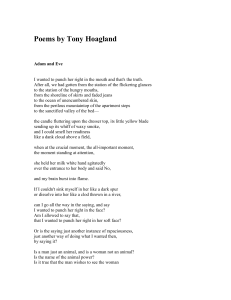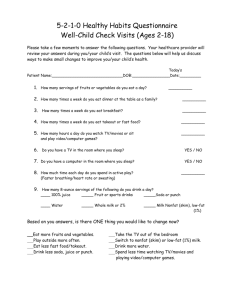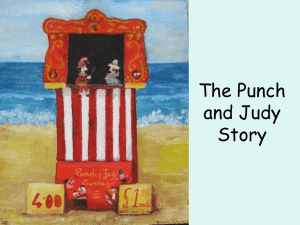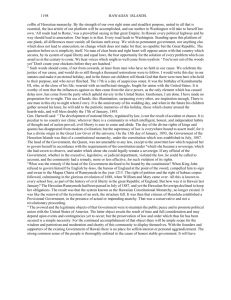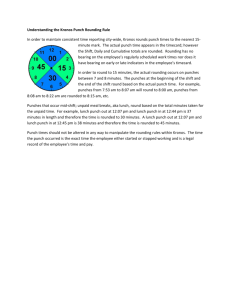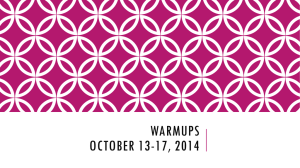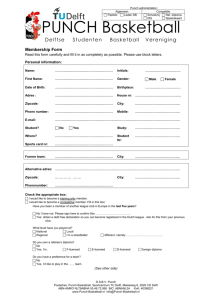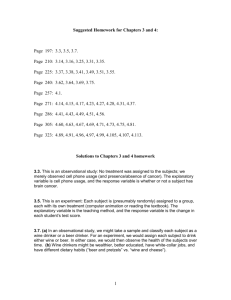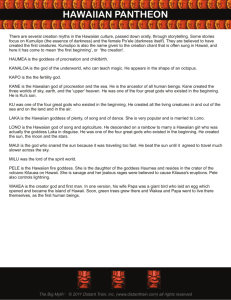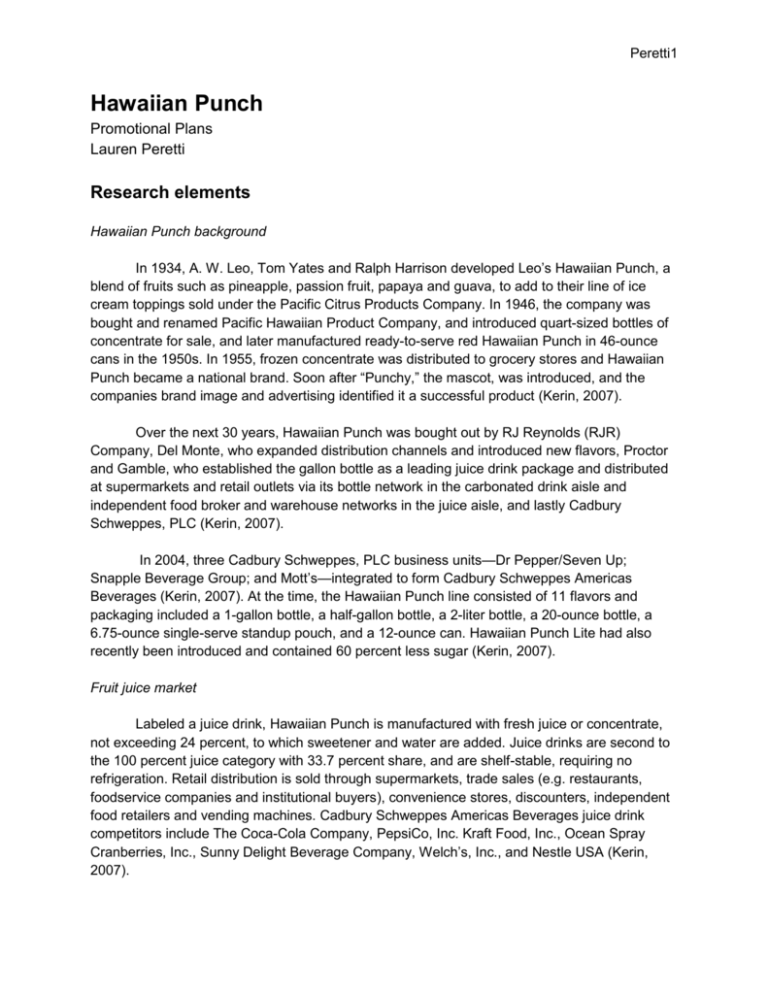
Peretti1
Hawaiian Punch
Promotional Plans
Lauren Peretti
Research elements
Hawaiian Punch background
In 1934, A. W. Leo, Tom Yates and Ralph Harrison developed Leo’s Hawaiian Punch, a
blend of fruits such as pineapple, passion fruit, papaya and guava, to add to their line of ice
cream toppings sold under the Pacific Citrus Products Company. In 1946, the company was
bought and renamed Pacific Hawaiian Product Company, and introduced quart-sized bottles of
concentrate for sale, and later manufactured ready-to-serve red Hawaiian Punch in 46-ounce
cans in the 1950s. In 1955, frozen concentrate was distributed to grocery stores and Hawaiian
Punch became a national brand. Soon after “Punchy,” the mascot, was introduced, and the
companies brand image and advertising identified it a successful product (Kerin, 2007).
Over the next 30 years, Hawaiian Punch was bought out by RJ Reynolds (RJR)
Company, Del Monte, who expanded distribution channels and introduced new flavors, Proctor
and Gamble, who established the gallon bottle as a leading juice drink package and distributed
at supermarkets and retail outlets via its bottle network in the carbonated drink aisle and
independent food broker and warehouse networks in the juice aisle, and lastly Cadbury
Schweppes, PLC (Kerin, 2007).
In 2004, three Cadbury Schweppes, PLC business units—Dr Pepper/Seven Up;
Snapple Beverage Group; and Mott’s—integrated to form Cadbury Schweppes Americas
Beverages (Kerin, 2007). At the time, the Hawaiian Punch line consisted of 11 flavors and
packaging included a 1-gallon bottle, a half-gallon bottle, a 2-liter bottle, a 20-ounce bottle, a
6.75-ounce single-serve standup pouch, and a 12-ounce can. Hawaiian Punch Lite had also
recently been introduced and contained 60 percent less sugar (Kerin, 2007).
Fruit juice market
Labeled a juice drink, Hawaiian Punch is manufactured with fresh juice or concentrate,
not exceeding 24 percent, to which sweetener and water are added. Juice drinks are second to
the 100 percent juice category with 33.7 percent share, and are shelf-stable, requiring no
refrigeration. Retail distribution is sold through supermarkets, trade sales (e.g. restaurants,
foodservice companies and institutional buyers), convenience stores, discounters, independent
food retailers and vending machines. Cadbury Schweppes Americas Beverages juice drink
competitors include The Coca-Cola Company, PepsiCo, Inc. Kraft Food, Inc., Ocean Spray
Cranberries, Inc., Sunny Delight Beverage Company, Welch’s, Inc., and Nestle USA (Kerin,
2007).
Peretti2
Distribution
Hawaiian Punch is distributed by two separate networks to serve supermarkets and
other retail customers.
Finished goods
Packaged in ready to serve containers.
Shipped to distribution centers for delivery to retail outlets.
Independent food brokers and sales representatives are responsible for sales to
retail consumers.
Retail buyer is involved in merchandising the juice drink aisle at location; they do
not service the soft drink aisle.
Packaging includes 1-gallon bottle, half-gallon bottle and 6.75-ounce single-serve
standup pouch.
Focused on “mom” being the primary purchaser for the family.
Direct-store delivery (DSD)
Concentrate is sold to licensed bottlers, who combine with sweeteners and
water, package the product, and sell to retailers.
Bottlers deliver and shelve drinks in the soft drink aisle or location in supermarket
or retail outlet; they do not service the juice drink aisle.
Bottlers stock vending machines and deliver syrup to fountain customers, such
as restaurants.
Packaging includes 2-liter bottle, 20-ounce bottle, and 12-ounce can.
Focused on urban teens and offers a variety of flavors (Kerin, 2007).
Target audience
Juice and soft drink supermarket aisles attract buyers from households with children
under 18 years old. The juice aisle reached children “under age 6” and “up to age 12,” and the
soft drink aisle was more popular with children ages 6 to 17 (Kerin, 2007).
Situation analysis
As the number one fruit punch drink in the U.S., Hawaiian Punch is backed by a brand
loyal audience (Kerin, 2007). Their tween/teen target market is often inspired to make
purchases, or ask their moms to purchase, brands that have “prizes inside” or “chances to win,”
and parents especially like free or discounted merchandise. Specifically, Hawaiian Punch
appeals to both the juice enthusiast and the soft drink addict, giving it advantage over other
competitors, but sometimes marketers implement a pull-strategy, or in this case study a “go-tomarket strategy” in order to encourage consumers to choose their product over another.
At the time of the merger, “the supermarket industry, where loyalty programs were
relatively mature, cost from 1 percent to 1.5 percent of revenue, and in other industries they cost
Peretti3
between 2 percent and 5 percent" (Beal, 2004). Sales promotions are long-term commitments,
often pricy are take several months to see a return-on-investment. In order for companies to
implement effective promotions, they must be profitable, as well as measurable, and work with
marketing objectives to reach customers and potential consumers.
Sales promotion
“Sales promotion is a marketing communication function that adds value to brand
messages and intensifies brand contact when a customer or prospect is at the critical stage
where brand decisions are being evaluated and made” (Mezura, 2008). Primarily one-way
messages, sale promotions impact the behavior of consumers and can be very persuasive
because they offer a tangible value and call for an immediate response. For a sales promotion
to effectively reach consumers and enhance brand value, it must also be built alongside
marketing objectives (Mezura, 2008).
Two types exist:
1. Consumer promotions are designed for end-users of buyers.
2. Trade promotions are meant for customers in the distribution channel,
including distributors, wholesalers and retailers.
Previous loyalty programs
In 2001, Hawaiian Punch sponsored “5 Friends, 2 Concerts, 1 Wild Weekend," a contest
geared toward their teen demographic that awarded a customized promotion and a concertfilled weekend. “Consumers could win a trip instantly by looking …inside specially marked
Hawaiian Punch" products. Other prizes included a portable CD player or an instant camera,
and each promotional 12-pack (bottles and cans) contained a “55-cents-off coupon good toward
a consumer's next purchase of two 2-liters, two 3-liters or one 12-pack of Hawaiian Punch.”
Marketing materials included pole signs, shelf talkers and static clings designed to attract their
target audience with images of teens having a good time and conveying Hawaiian Punch’s “fun
attitude” (Rollout, 2001).
Prior to 2004 and the consolidation of the three business units that make up Cadbury
Schweppes Americas Beverages, Dr Pepper/Seven Up teamed up with eBay to introduce a
loyalty program entitled “Liquid Loot,” to build stronger relationships with consumers and the
online community. “As part of the program, consumers who purchase specially marked Dr
Pepper/Seven Up products…will be given special codes that can be redeemed for points on
www.LiquidLoot.com.” Points were deposited into accounts and consumers used the points to
bid on prizes and awards similar to an auction. Consumers received e-mail updates for “new
items up for bid,” current Dr Pepper/Seven Up promotions, and their point standings, as well as
electronic coupons to sample new products (Dr Pepper, 2003).
Peretti4
SWOT defined
Strengths
Hawaiian Punch was named the number one fruit punch drink in the U.S. and is Cadbury
Schweppes Americas Beverages fourth largest brand, measured by volume.
Only brand that employs two separate manufacturing, sales, and distribution networks to
stock and serve the same beverage.
Ninety-four percent brand awareness and strong brand equity.
Linked with fun childhood consumption, refreshing tact, vitamin C content and the
Punchy mascot (Kerin, 2007).
Weaknesses
Recent flavor extension lacked awareness among households, including Hawaiian
Punch Lite.
Traditional child-centered focus had been played down, as the company now had a
policy to not advertise to children under 8 years old.
Punchy, the mascot, no longer had a prominent role in advertising.
Seventy-seven percent of buyers only purchased one package size (Kerin, 2007).
Opportunities
Increase trials, repeat purchases, frequency and quantity of purchases.
Counter competitor’s offers.
Extend brand use through cross-selling.
Build database and customer retention.
Reinforce brand image and strengthen brand relationships.
Provide an instant incentive and increase interest in the product and repeat purchases
(Mezura, 2008).
Threats
Frequent buyer programs can make consumers work too hard (often the effort to receive
the offer exceed its benefit).
Promotions could emphasize quantity over quality.
Could be seen as a way to buy sales, instead of introduce a good value.
Difficult to judge promotional sales and could be unprofitable.
Attracts those only searching for the best deal instead of encouraging long-term
relationships.
Potential for competitor copying and negative impact on branding (Mezura, 2008).
Peretti5
Promotional plans
Hawaiian Punch media advertising accounted for $2.2 million, and was split evenly
between radio and print ads. Promotion expenditures included the cost of an interactive Web
site, coupons, shelf banners and in-store displays, as well as shelf placement in the juice drink
aisle (Kerin, 2007).
Several promotions, such as coupons, price reductions, refunds and rebates, premiums,
specialties, sampling, sweepstakes and contests, tie-ins and loyalty programs, have potential to
motivate consumer purchases (Mezura, 2008). However, in the case of Hawaiian Punch,
consumer sales promotions, like coupons at in-door displays, instant price reductions through
on-package coupons and “buy #, get one” offers and sweepstakes opportunities would be the
best incentives for the product. Additionally, a trade promotion using a point –of-purchase
display would also be beneficial.
Consumer
1. Punchy Packs a Punch
Two things are always a hit with children- cartoon characters and games. This proposed
consumer promotion brings back the original Hawaiian Punch mascot, Punchy, and utilizes a
medium that reaches teens and their target audience directly on their mobile phone. Incentives
include interactive media, coupons, and tie-ins.
Objective
Appeal to tween/teen audience with interactive media and promotional character.
Strategies
Utilize direct-store delivery distribution network to promote purchase of 2-liter
bottles, 20-ounce bottles and 12-ounce can in soft drink aisle.
Reintroduce variety of flavors.
Focus on fun, child based marketing approaches.
Link product to Web site and mobile phones.
Tactics
Develop a Web and mobile based game featuring Punchy
o Within game, Punchy rides the waves on his surf board collecting
Hawaiian Punch products (“packing punch” in his bag), while
reintroducing the variety of HP flavors.
o Punchy also battles drink competitors (“packing a punch” with his fist) and
upon reaching various stages of the game, teaches the player fun facts
about HP products.
Peretti6
Incentive located on single-serving 20-ounce bottles or 12-ounce cans exterior
packaging.
Codes revealed on bottle caps and interior case of 12-pack cans
Slogan: “Punchy Packs a Punch.”
Slogan: “Help Punchy battle the waves and knock out lame drinks.”
Mobile call-to-action “Text “Punchy” to 1234 to play.”
Web call-to-action: “Visit HawaiianPunch.com to play.”
Promotions would send participants to the Web site and mobile phone where
they would register to receive a coupon for a free 20-ounce bottle with the code
on the product. The coupon would be delivered to email, and codes would dictate
flavor and region.
Visitors could download a tropical ring-tone to their mobile phone, as well as
Punchy wallpaper.
2. Party with Punchy
According to the case study, 68 percent of buyers purchased the gallon size and 53
percent buy the half gallon (Kerin, 2007). This proposed consumer promotion includes a price
reduction and sweepstakes offer for a party catered by Hawaiian Punch products, and appeals
to fun-loving children, as well as parents’ money conscience wallets.
Objective
Reach the bulk buying “mom” audience purchasing for a family or party to serve.
Strategies
Utilize finished goods distribution network to promote purchase of 1-gallon bottle,
half-gallon bottle and 6.75-ounce single-serve standup pouch in juice aisle.
Encourage high quantity purchases.
Reintroduce variety of flavors.
Focus on sweepstakes opportunity directed at children and reduced merchandise
directed at adults.
Link product to the Web.
Tactics
Instant “buy two, get one” on-package coupon when purchasing 1-gallon bottle,
half-gallon bottle and 6.75-ounce single-serve standup pouch.
Promote a “Party with Punchy” sweepstakes with incentive that encourage
purchase of bulk packaging.
Slogan: “Buy a 12-pack, gallon or half gallon of Hawaiian Punch and Punchy
could serve the drinks at your next party.”
Web call-to-action: “Visit HawaiianPunch.com to enter.”
Purchasers would enter online to have a party catered by the company, who
would reintroduce all the HP flavors.
Peretti7
Punchy himself would attend the Hawaiian-themed luau party.
Participants would register to receive a coupon for a reduced price HP product to
try a new flavor.
Visitors to the site could download punch recipes, as well as complementing
snack food suggestions, to use at their next party.
Trade
3. Punchy gets Healthy
Recent trends have reveled that consumers are paying closer attention to nutrition facts
and the benefits of consuming healthy products. This trade promotion uses a point of purchase
(POP) display incentive to reintroduce Hawaiian Punch Lite.
Objective
Reach health conscience consumers familiar with Hawaiian Punch, but not Hawaiian
Punch Lite.
Strategies
Utilize an interactive POP display at a reduced price to retailers if it can be place
at the ends of both juice and soft drink aisles.
Reintroduce Hawaiian Punch Lite.
Highlight “60 percent less sugar.”
Link product to the Web for nutrition facts.
Tactics
Prominently use photos of fruits to increase awareness of “lite” beverage.
Show Punchy doing physical activities , like bicycling, playing tennis, jump roping
and of course surfing, to further suggest the products healthy attributes.
The display itself will include a sensor and announce, through audio device, HP
Lite health facts as shoppers walk by.
Slogan: “Punchy gets Healthy. You can too.”
Web call-to-action: “Visit HawaiianPunch.com to get nutrition facts.”
Participants enter online receive a coupon to purchase a reduced price HP Lite
on their next visit.
Visitors to the site can learn fun facts about health and the benefits of HP Lite.
References
Beal, B. (2004, July 14). Getting loyalty programs right. CRM. Retrieved September 24, 2008,
from http://searchcrm.techtarget.com/news/article/0,,sid11_gci992695,00.html
Peretti8
Dr Pepper/Seven Up and eBay forge marketing relationship. (2003, Feburary 6). eBay.
Retrieved September 24, 2008, from
http://investor.ebay.com/releasedetail.cfm?releaseid=101371
Kerin, R. A., & Peterson, R. A. (2007). Strategic marketing problems (11th ed.). Upper Saddle
River, NJ: Pearson Prentice Hall.
Mezera, C. (2008, August 18). Lesson 6: Sales promotion fundamentals. Retrieved September
22, 2008 from eCampus: Assignments & Lessons website:
https://ecampus.wvu.edu/webct/urw/lc5116001.tp0/cobaltMainFrame.dowebct. P.I. Reed School
of Journalism, WVU.
Rollout: Hawaiian Punch gives teens a musical weekend. (2001, October 1). Point of Purchase.
Retrieved September 24, 2008, from http://www.allbusiness.com/retail-trade/4252038-1.html


